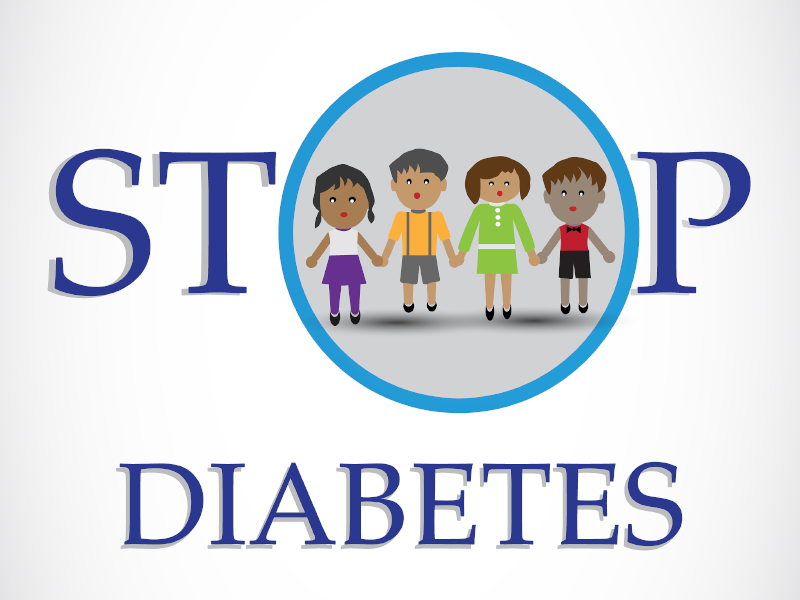Today, more than a third of all American adults have diabetes or prediabetes, according to the American Diabetes Association (ADA). Also, 208,000 children and teens under the age of 20 have been diagnosed, reveals the National Institutes of Health. This is only the tip of the iceberg.
A study by the Centers for Disease Control and Prevention (CDC) found that if incidence rates remain steady, childhood type 2 diabetes in the U.S. is expected to increase by 49% by the year 2050. Those with type 1 will also increase by 23%. Still worse, if the current incidence rate increases, the percentages could quadruple and triple, respectively, says the CDC.
So being aware of the causes and symptoms of diabetes and knowing how to reduce your risk are crucial to your and your family’s health.
Causes and risk factors
Understanding the causes of a disease is essential to prevention. However, researchers still don’t know the exact cause of type 1 diabetes. Mayo Clinic explains that medical researchers believe it results from a combination of heredity and environmental factors. These include exposure to a virus, low vitamin D consumption or early exposure to cereal or cow’s milk. These factors aren’t direct causes of the disease, but may play a role when combined with other genetic and unknown factors.
Mayo Clinic says with type 2 diabetes, “your immune system – which normally fights harmful bacteria or viruses – attacks and destroys your insulin-producing cells in the pancreas.” As a result, you’re left with little to no insulin, so sugar builds up in your bloodstream rather than going into your cells as it should.
The cause of type 2 diabetes and prediabetes isn’t fully understood either. But medical researchers do know several factors play a role. These include:
- family history
- weight
- race
- age
- inactivity
- high blood pressure
- polycystic ovary syndrome
- abnormal cholesterol and triglyceride levels
During pregnancy, some women are also at increased risk. Gestational diabetes has several factors, including a family history of diabetes, being over the age of 25 or overweight before pregnancy. Non-Caucasian women are also at increased risk.
How to reduce your risk
There are several things adults and kids can do to reduce their risk of type 2 diabetes. Prevention all boils down to these five words, explains Harvard School of Public Health (HSPH): “Stay lean and stay active.” More specifically, HSPH recommends you:
- Control your weight
- Be active
- Eliminate sugary drinks
- Eat good fats and reduce bad fats
- Eat whole grains rather than highly processed carbohydrates
- Reduce or eliminate red and processed meat. Instead, eat fish, poultry and nuts
- Drink alcohol in moderation only, one drink a day for women and two for men
- Quit smoking
Symptoms
According to the CDC, there are several symptoms to watch for that could indicate either type 1 or type 2 diabetes. Being aware of these is crucial, so you can seek early treatment and prevent a medical emergency such as diabetic shock. Symptoms include:
- Heavy thirst
- Frequent urination, particularly at night
- Excessive hunger
- Tiredness
- Dry skin
- Unexplained weight loss
- Blurred vision
- Tingling or numbness in hands and feet
- Recurrent infections
- Slow-healing sores
For type 1 diabetes, additional symptoms that may be present include stomach pain, nausea and vomiting. This form of diabetes typically develops between childhood and young adulthood, although it can have a later onset.
Type 2 diabetes, on the other hand, may or may not show any symptoms. At one time, type 2 was primarily an adult disease. In recent decades, as childhood obesity has become more common, type 2 diabetes has become more prevalent in kids.
As for gestational diabetes, typically there are no symptoms. Therefore, testing during pregnancy is a routine procedure.
Care and treatment
Anyone with type 1 diabetes will require constant monitoring and insulin therapy for the rest of their life. Insulin is administered via injection or an insulin pump. Another method of insulin delivery for those 14 years old and over is use of an artificial pancreas, in which blood sugar levels are monitored and insulin is automatically delivered as needed.
Those with type 1 diabetes may require other medications as well. These include aspirin, cholesterol-lowering medications and high blood pressure medications.
Diet and exercise, similar to the recommendations for preventing type 2 diabetes, are also essential parts of the treatment for type 1.
Treatment for type 2 diabetes requires some monitoring of blood sugar levels. While some people with type 2 need insulin or other medication to control it, many people can control the disease with diet and exercise alone. The good news for those with type 2 diabetes is that with proper diet and an active lifestyle, the condition can go into remission.
While all factors that play a role in diabetes may not be within our control, most factors are, particularly for type 2 diabetes. Leading a healthy lifestyle and making necessary changes to do so can substantially reduce your risk for the disease.

